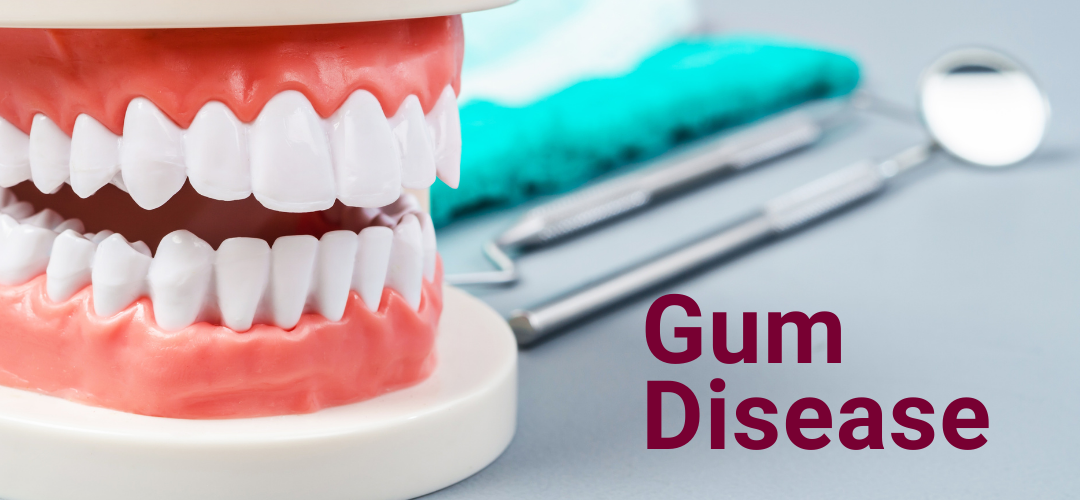Gum disease is caused by repeated attacks of the bacteria that live in dental plaque. Plaque is what builds up on our teeth after bacteria mix with sugars from the food we eat. The bacteria release acids and cause a sticky film to form. This layer can harden over time if we do not brush or floss at appropriate times. If plaque is left unattended for extended periods of time, it can start to degrade enamel, the outer layer of the tooth.
What Causes Gum Disease?
Some factors that cause gum disease are poor oral hygiene, a high sugar diet, frequent alcohol consumption, long-term tobacco use, diabetes mellitus, cancer, fluctuating hormone levels, and some others. There are three stages of gum disease – gingivitis, periodontitis, and advanced periodontitis.
What is Gingivitis?
Gingivitis is a type of gum disease where some presence of inflammation, redness, swelling, and bleeding occur, especially during brushing and flossing. The most common cause of gingivitis is poor oral hygiene which can lead to an accumulation of plaque. Gingivitis, however, can be reversed by maintaining a frequent routine of brushing at least twice a day and flossing daily.
What is Periodontitis?
Periodontitis is the intermediate stage of gum disease. In this stage, supportive bone and cartilage tissue deteriorate. Additionally, gum pockets start to develop, and plaque begins to deposit in the pockets below the gum line. To maintain the health of gum tissues in this stage, periodontal treatment such as scaling, and root planning are necessary to remove the plaque from deep pockets under the gum line.
What is Advanced Periodontitis?
If periodontitis is not maintained, it can progress to advanced periodontitis. In this stage, more bone is destroyed and cannot be reversed. Teeth may even be lost or shifted out of place. There are more aggressive forms of treatments which need to be done in this stage; without periodontal treatment, the teeth will likely require extraction. One of the treatment options for advanced periodontitis is flap surgery where the pocket size is reduced to maintain healthy gum tissue. Another treatment that can be done is bone grafting which prevents tooth loss by helping hold the tooth in place. The bone graft can be synthetic or may be composed of small fragments of the patient’s bone.
How can I Reduce my Chances of Gum Disease?
To prevent or reduce your chances of gum disease, you can incorporate the following measures in your lifestyle:
- Brush your teeth at least twice a day
- Use a soft bristled toothbrush or an electric toothbrush – they’re more effective at removing plaque
- Floss every day
- Use a mouth wash to help reduce the accumulation of bacteria and plaque eventually
- Schedule regular dental cleanings with your dentist – every six months (twice a year)
Gum disease can often lead to severe problems. The preventative measures listed above are ample ways of preventing gum disease. While maintaining a frequent oral hygiene routine is important, it’s extremely important to visit your dentist for regular cleanings every six months (twice a year). The cleanings provided by your dentist will help remove any remaining bacteria or plaque – leaving you with a healthy, bright smile!
For affordable, high-quality dental care in Henderson, Nevada or South Jordan, Utah contact Roseman Dental and Orthodontics.
Article by Tanisha Khurana

Tanisha Khurana
DMD Candidate Class of 2023
Roseman University College of Dental Medicine
ASDA Chapter Fundraising Chair
Pediatric Club Outreach Coordinator



